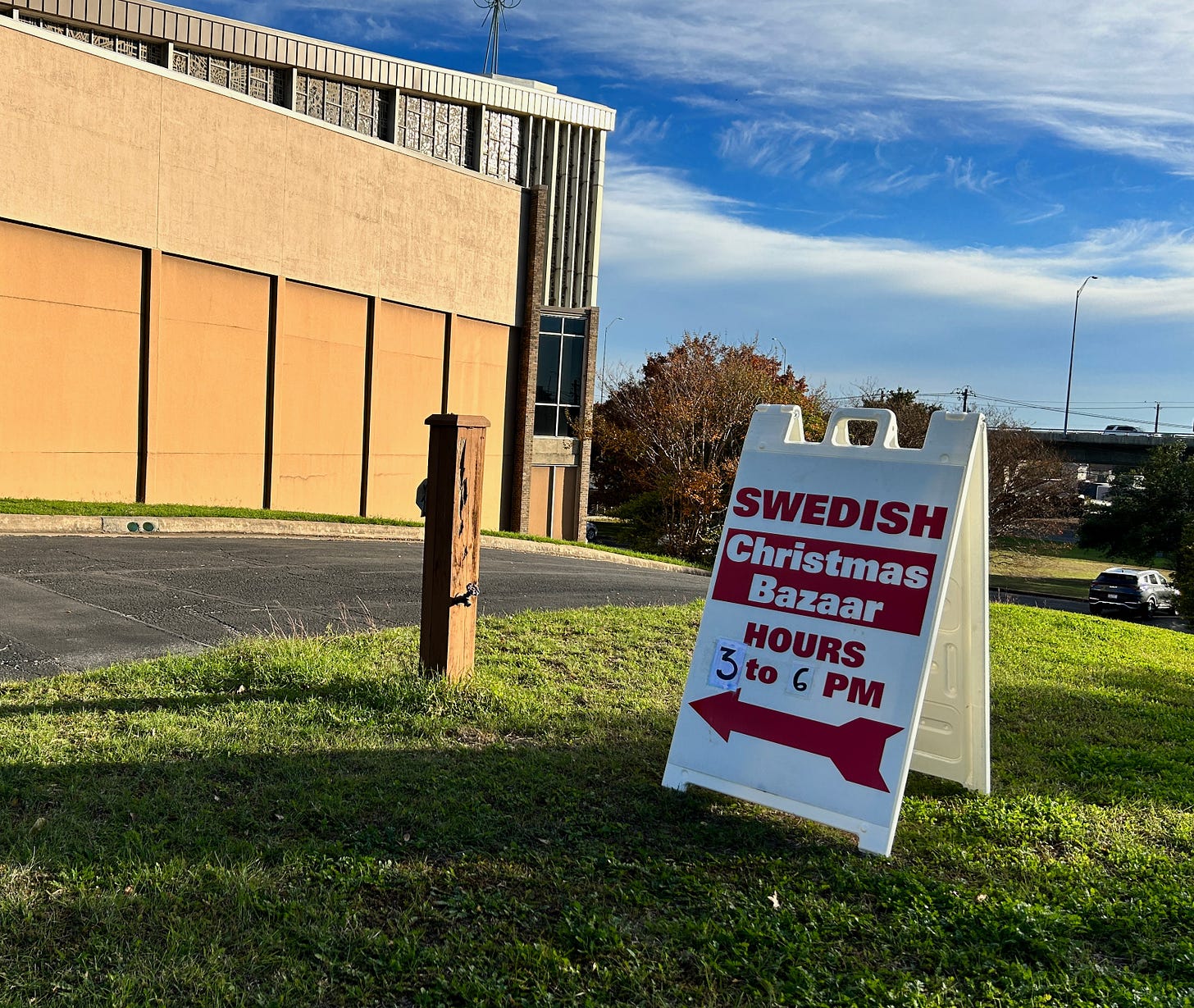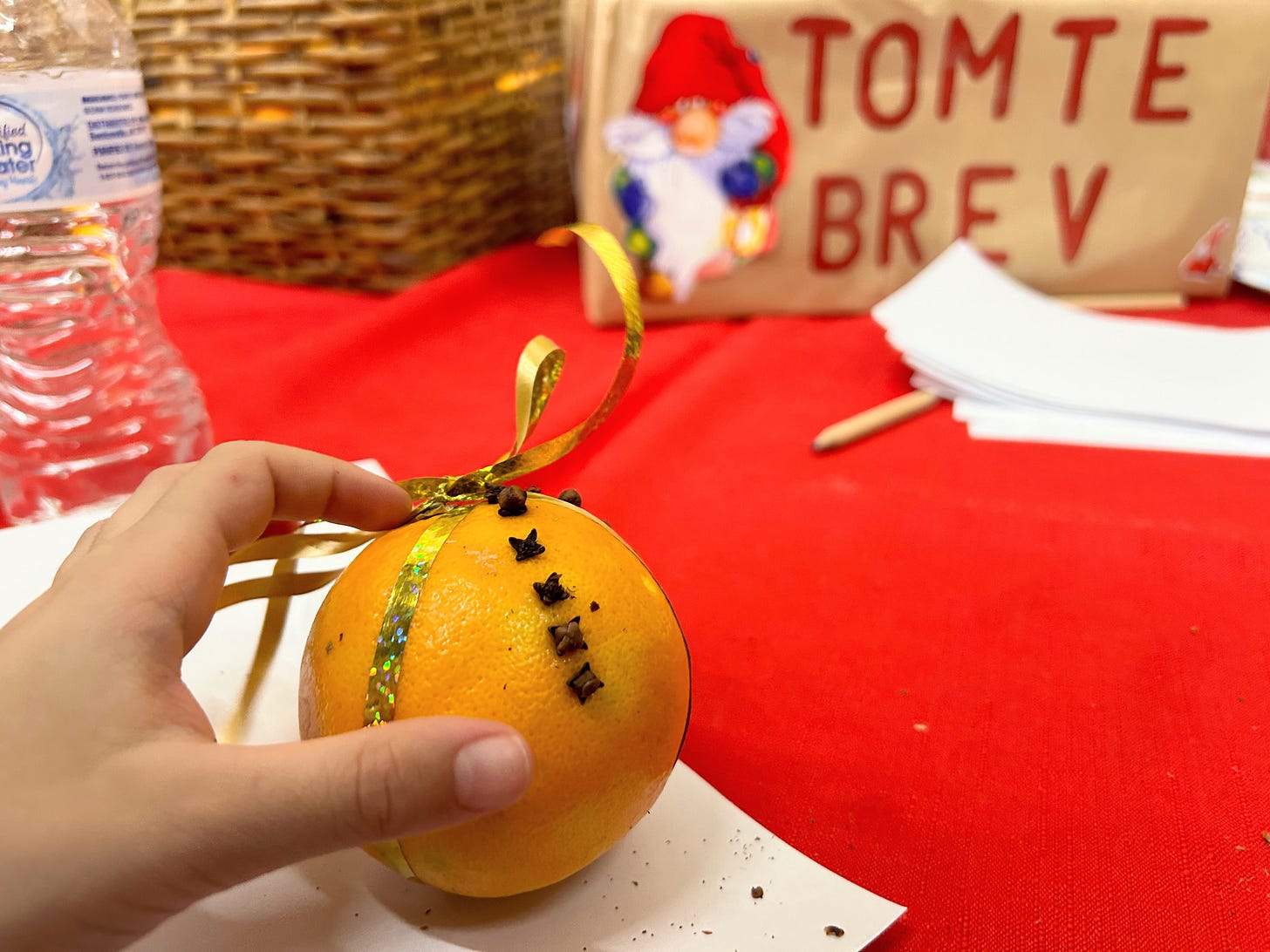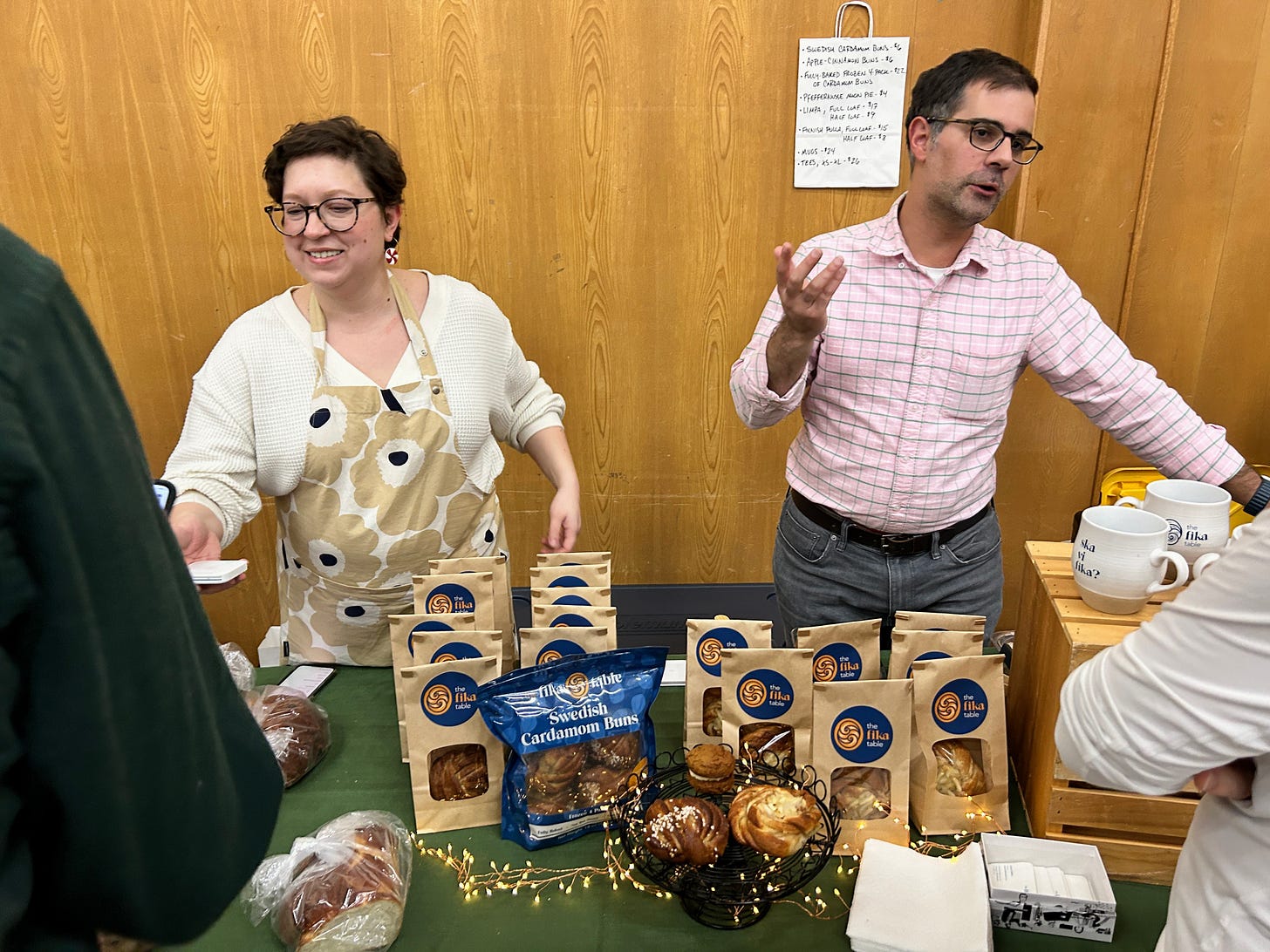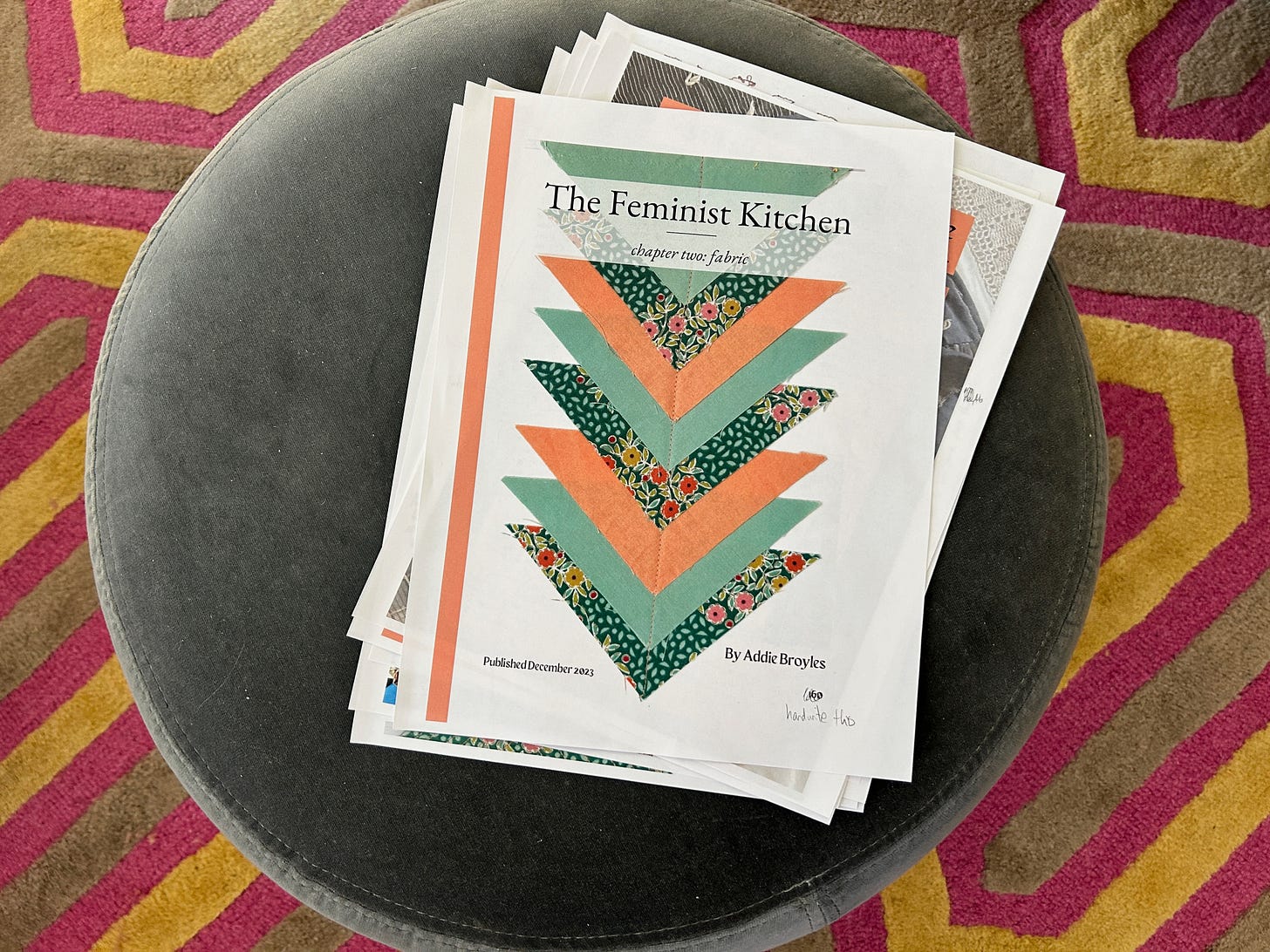What St. Lucia taught me: You can't force tradition, even at Christmas
My first Swedish holiday concert left me feeling like a lutefisk out of water.
I went to my first St. Lucia celebration in early December, and I felt a little downhearted after it was over.
This is the classic Swedish Christmastime holiday, where a woman wearing candles and a white robe leads a choral procession of other white-clad women, usually in a church. The songs and traditions associated with St. Lucia — including drinking mulled wine and eating a saffron bun called Lussekatt — didn’t really begin in earnest until the late 1800s and early 1900s, but now the holiday is one of the most typical you’ll find in Sweden, right up there with midsummer and the crayfish parties held every August.
I only know this, of course, because of IKEA, which hosts a handful of special Swedish meals every year, including the winter feast known as Julebord.
We did not grow up in what you’d call a Swedish-American home. Up until a few years ago, everything I knew about Swedish culture came from IKEA. I was born 90 years after the arrival of our most recent Swedish immigrant ancestor, and I completely understand why assimilation would have been a high priority for Karolina and her family in the first decades they lived here.
But as I’ve started to get interested in my own immigration story and heritage, I’ve been doing things like trying to learn Swedish and traveling to Chicago to explore the Swedish neighborhood of Andersonville. In 2016, my sister and I traveled to Sweden, where we explored some of the places we knew our ancestors had lived, eating as many smorgasbord sandwiches as we could before switching over to pasta, pizza and Indian food.
Related: Crying over coffee cake a long way from home
My sister and I are going back to Sweden next year, this time with my mom and my niece, so they can have a taste of the homeland. This time, we’ll get a chance to meet up with some of our long-lost cousins, with whom we reconnected in the years that followed our trip in 2016.
Although we have common ancestors, I’m not sure how much shared culture we’ll have. I have no idea if the ancestors who left Sweden for America attended St. Lucia celebrations before (or after) they left their homeland, but I know that their descendants do because I keep tabs on them through Instagram. (They also have some kind of running joke around Christmas with Alf, as in Alf, the TV character, that I still don’t totally understand but can’t wait to ask them when we meet for the first time.)
In my quest to expose myself to more Swedish culture in America, I went to the annual Swedish Christmas Bazaar and Lucia Concert that is hosted by an organization called SWEA, an international organization of Swedish women that has an Austin chapter. This event has been happening at Gethsemane Lutheran Church for more than a decade, but I hadn’t been interested enough to attend until this year.
I was surprised to hear the women at the ticket table speaking Swedish with some of the attendees in front of me. I’ve never heard Swedish spoken in Austin, and despite more than a year learning on Duolingo, I was totally helpless to communicate with them, so we spoke in English. I bought my ticket and walked into the hall where people had gathered. There were some vendors selling gnomes, the true stars of Scandinavian Christmas, as well as Swedish dish clothes, books in Swedish, and some really cute earrings that weren’t necessarily Swedish but were made with a lovely woman about my age who grew up on the Texas-Mexico border with a Swedish dad and a Mexican mom.
I came upon the kids’ craft table, where there was a box for Tomte Brev — “Letter! I know that word.” I put two-and-two together and realized that, in Sweden, kids write letters to gnomes rather than to Santa. All around the table, kids were wrapping oranges in ribbon and poking cloves into the rind.
Although I’m the kind of person who joins the Swedish-American Historical Society and who can, generally speaking, make friends anywhere, I was there by myself and feeling very much alone at this moment. Like a child on the first day of school. So, I decided to crouch down beside these kids and make my own orange. The little girl next to me shared her cloves with me, and I helped her tie her ribbon. She switched between speaking English with me and Swedish to her mom, who was standing nearby.
I bought a few things from the market, including cardamom buns from the Fika Table, a wonderful Scandinavian bakery that I wrote about when I was about the paper. We ate a lot of kanelbullar when we were in Sweden, so I feel that spark of connection when I get to have one of these pastries. At least one thing at the event was familiar.
The St. Lucia choir would be performing in the sanctuary of the church shortly, so I headed there a little early to get a seat and unpack the mix of feelings I’d encountered at this festive community gathering where I didn’t really feel like I was part of the community, even though intellectually I knew I was.
As the sun sat outside, illuminating the church with colors through the stained glass near the ceiling, families filled up the pews. As the sanctuary grew darker over the next few minutes, we heard the faint voices of the choir outside the hall. A group of about a dozen women, all wearing white robes and carrying candles, sang a song I’d never heard as they walked down the aisle of the church. It was a beautiful moment, but totally unfamiliar to me. I thought I might get emotional being part of this special moment for the first time, but the opposite was true. I felt a little teary because it was so unfamiliar. I felt like an outsider, an intruder. An observer rather than a participant.
The songs were lovely. There was a trumpet solo. I watched the lead woman with the candles on her head stand completely still throughout the entire performance, an impressive feat that I’m sure was a major moment for her. Only one young woman gets to play St. Lucia each year, so I assumed that finally getting picked to wear the candles is something that you dream of doing your entire childhood and then reflect fondly upon for the rest of your years.
But I can only imagine what that feels like.
For the last couple of songs, a bunch of little girls (and boys) walked down the aisle of the church holding battery-operated candles and singing more songs I’d never heard. Almost all of the kids who were gathered around the table making oranges with me were suddenly the stars of the show. Cute as a button they were, seamlessly occupying this space between cultures without all the existential questions about identity.
This time of year is filled with so many traditions, some so baked into our psyche that they hide in plain sight. Making cookies or latkes, humming along to Sleigh Ride while hanging ornaments on a Christmas tree, drinking hot cocoa and walking around the mall, or watching Die Hard and debating whether it’s a Christmas movie.
I shouldn’t be surprised when I hit a roadblock in this journey of re-acquiring a sense of cultural identity that my forbears might recognize. This was my first time at an event like this, and it takes time to go from exposure to familiarity, and from familiarity to fondness.
Only then can fondness settle into your heart and grow into a sense of relatability and belonging, which are the roots of any healthy relationship.
Culture is, after all, about the customs, values, behaviors, and perceptions we share with one another. And it’s not something you can force upon anyone, including yourself.
A nice woman with the local SWEA chapter did plant a seed of connection that I’m grateful for. Although her family immigrated to the U.S. a long time ago like mine, the group, which has 70 chapters around the world, targets people with much more language skill than me.
She kindly invited me to their upcoming glögg night, but it’s on the same day as my family’s annual tamal-making party, a holiday tradition that has become one of our favorites in the decades since moving to Texas.
Tamales are a food I’d never eaten until I was well into my 20s, and yet, 20 years later, they are entrenched in our holiday routine. Tamales aren’t what you would call an ancestral food for us. None of my grandmothers ate them, but they have become something my kids might one day pass on to their kids.
My cousins, however, had Mexican grandparents who died years ago. They grew up in suburban Austin without a lot of focus on their Mexican heritage or cultural traditions, but that’s changing as they get older and are starting their own journeys of learning Spanish and connecting with their ancestral roots. Making tamales with them every December has become a celebration of our blended family culture that we all look forward to.
But next year’s glögg night? I’m so there.
Because our individual sense of culture and identity are always changing, and so am I.
Hi, friends! Happy almost end of the year!
I hope these past few weeks have had at least a few cozy moments that weren’t too hectic. It’s the biz-busiest season of all, and I’ve been deep in zine production, so although I’ve been quiet on the newsletter front, I’ve been hustling behind the scenes to design, edit and ship the 16-page booklet to the printer.
The good news is that I should have copies of the zine by the end of the year, so you should be getting your copies the first week or two of January.
A favor: If you are a new subscriber (since June), can you please fill out this form so I can know where to send your zine?
Thank you!
Until next week,
Addie













Still loving and savoring all your experiences - the way you write about it makes me feel like I’m part of it with you.
If I’d been there, I would have sought to share this experience with you. Alas, I had another commitment that day. Gethsemane is my church, but I’m not Swedish. I’m fond of learning about cultures and traditions. Thank you for the photos and your newsletter! All the best!